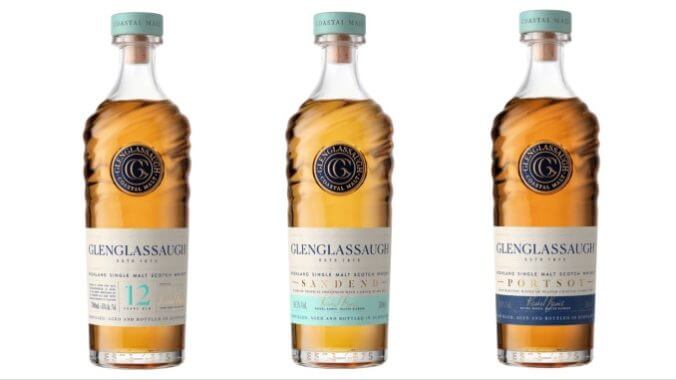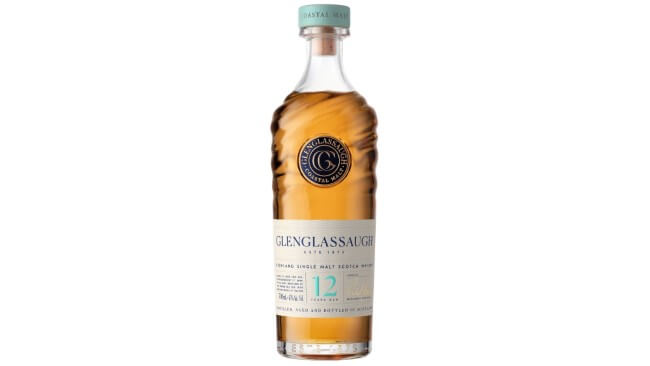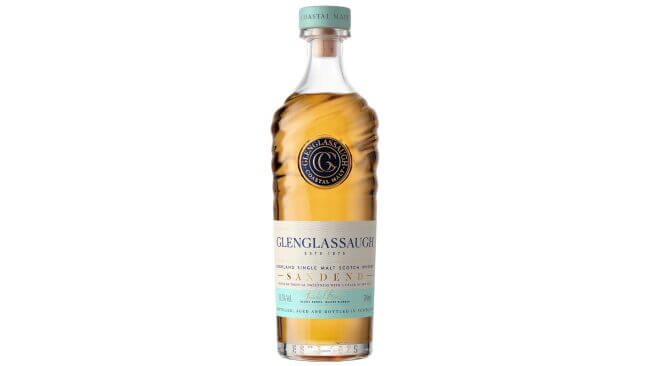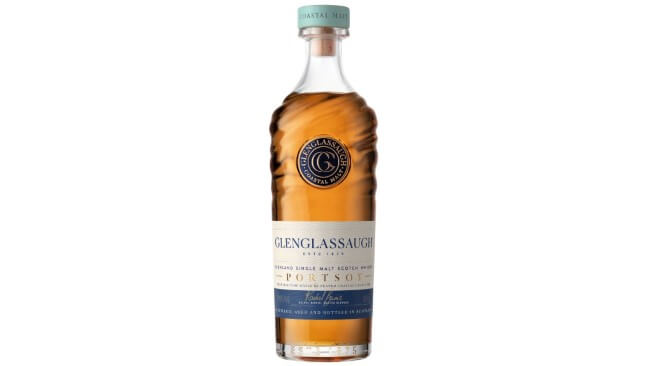Tasting: 3 Core Single Malt Scotches from Glenglassaugh (12 YO, Sandend, Portsoy)
Photos via Glenglassaugh, Brown-Forman
I’ve always been amazed by the way a scotch whisky distillery can exist for years–for decades, for literal centuries–without the world knowing all that much about the spirit it produces. This is a unique facet of the scotch whisky industry’s blending-based business model, and the willingness of many companies to work together in sourcing whisky for blending–it means that numerous distilleries have existed over the decades with the primary function of providing malts and grain whiskies to be used in blends produced by other companies. In other words, even if you’re a scotch whisky distillery that has been in operation for a century or more, there’s a good chance that you’ve never produced a regularly available single malt whisky of your own. And for almost 150 years, that was the case with the small distillery of Glenglassaugh.
Glenglassaugh is a small scotch whisky distillery located near the northern coast of the Speyside region of Northeast Scotland, close to the small town of Portsory, Banffshire, northwest of Aberdeen. Geographically, it doubtlessly belongs to the Speyside whisky region, but despite that it’s often counted among the Highlands whiskies–just one of the company’s little eccentricities. It was initially founded in 1875 by local entrepreneur and grocer James Moir and nephews Alexander and William Morrison, and operated continuously for the next century. But consumers weren’t particularly likely to know the Glenglassaugh name, as the company’s malt and grain whiskies were largely being used in the production of famous blended whiskies such as Cutty Sark and The Famous Grouse. Production on the site finally ceased in 1986.
As is the case in so many scotch whisky distilleries, the facility then lay dormant, waiting in stasis for more than 20 years before new ownership renovated the site and began production again in 2008. When this happens, it effectively restarts a timer: The long wait has now begun until the newly operating distillery can release its first well-aged casks. And 15 years later, that day has finally come, as Glenglassaugh (under current Brown-Forman ownership) this year finally unveiled its new flagship lineup of three single malt scotch whiskies. Packaged in bottles featuring an eye-catching, rippled glass design, they’re meant to evoke the changing shape of the coastal region that Glenglassaugh calls home.
As for the style of their spirit, Glenglassaugh does feel rather like a Highlands distillery, dabbling in multi-cask maturation (bourbon, sherry, red wine, port) but also with some forays into peated malt, which is more rare for its Speyside neighbors. We recently sat down with three samples from the distillery’s new collection: Taste along with us below.
Glenglassaugh 12 Years Old
ABV: 45% (90 proof)
MSRP: $65

I find myself fascinated by the decision-making process that the company has employed in creating this initial, three-bottle core range, because they’ve really gone against prevailing trends in many respects. When most new brands launch in the last decade or so, they launch with a few non-age-stated (NAS) flagships, as well as an age-stated flagship that is the premium product with the highest MSRP. Glenglassaugh has more or less flipped this, making their only age-stated malt, the 12 Years Old, actually the most affordable of the three by a small margin. It’s also the lowest in proof, though still at a very respectable 45% ABV–makes sense, as many scotch whisky barrels lose strength while aging thanks to the cool climate. The Glenglassaugh 12 Year Old serves as a blueprint for the distillery’s newly established style, being a blend of three styles of cask, ex-bourbon, sherry and red wine.
On the nose, this one initially reads as honeyed and toasty, with nutty toffee and definite sherry character. It’s sweet and nut-forward, with dried fruit and hints of sultana. After sitting out for a while, pastry notes and waves of cinnamon begin emerging. It’s quite a rich character on the nose. On the palate, this whisky displays some lovely stone fruit and vanilla, with engaging sweetness. I’m getting vanilla buttercream, nut butter and hints of tropical fruit, though there’s also traces of earthiness that almost feel like the tiniest and most subtle kiss of peat. It makes me wonder if perhaps this character is a maritime/salty note that has been absorbed by the spirit itself through its long aging in the immediate proximity of the ocean. Regardless, this entry is nicely balanced and I daresay it may well be the most complex of the three. Its more nuanced approach made it my favorite in this Glenglassaugh range.
Glenglassaugh Sandend
ABV: 50.5% (101 proof)
MSRP: $70

Of the three products, the non-age-stated Sandend is the bottle where I have more difficulty trying to conceptualize the root of the concept for the liquid. It’s presented at a notably higher strength of 101 proof, which does make it stand out. But the fact that it’s also triple cask matured (bourbon, sherry, manzanilla) makes me wonder if it’s conceptually different enough from the makeup of the 12 Year Old for the average consumer to immediately understand the differences while standing in the whisky aisle … as opposed to the peated Portsoy, which has an obvious hook to appeal to certain consumers. To someone without the blending acumen of the company’s Master Blender Rachel Barrie, I wonder if perhaps this will be too subtle a concept.
On the nose, this one initially reads slightly hot to me at this proof, and I gave it more time to blow off. After waiting, I’m finding lots of floral vanilla here, along with tropical fruit suggesting kiwi or melon, coated with white chocolate. On the palate this is oily and viscous, quite sweet and mouth coating. I’m getting heavy vanilla again, along with tropical fruit, cream soda, white grape, pineapple and a certain oxidized nuttiness likely being contributed by the several styles of sherry cask involved. It’s an intriguing combination of elements that really focuses in on the fruitier dimension of the spirit, without as much contribution perhaps from the casks.
Glenglassaugh Portsoy
ABV: 49.1% (98.2 proof)
MSRP: $75

Glenglassaugh’s Portsoy is the only overtly peated malt of the three, which is inevitably going to give it a very distinct character–even a novice would have no trouble picking it out of a lineup. This one is also triple cask matured, though this time that is a combination of ex-bourbon, sherry and port casks. Like the Sandend, this is NAS and at a pretty elevated strength of 98.2 proof, something that will likely appeal to the American whiskey geek demographic. I’m expecting modest peated character, as peated malts from Speyside and Highlands distilleries rarely have the smoky bombast of the classic Islay malts.
On the nose, my expectations proved to be accurate: Portsoy features a moderate peat presence, fairly earthy, with a mesquite BBQ-like smoke lingering in the background. Beneath it, I’m getting traces of caramel and a warm, toasty sweetness. On the palate, this one runs toward the dark side, with malt syrup and tamari, along with hints of mocha and plenty of roast. The peatiness has a somewhat medicinal character to it, some some brine–there’s a little ashy smoke, but it’s more vegetal/herbal than specifically smoke forward, with a lingering roasty bitterness. All in all, this is a pretty unique combination of Highlands and peated elements that definitely stands out in a crowd. It’s a bottle that peated malt whisky fans will want to check out, but peat-haters will probably prefer to avoid.
All together, the newly revamped Glenglassaugh line offers three expressions at a similar price point, but especially excels in their new flagship 12 Year Old, which really makes a lovely statement on the company’s profile and values going forward. I’ll be looking forward to seeing what else the Glenglassaugh brand has in store in the next few years.
Jim Vorel is a Paste staff writer and resident beer and liquor geek. You can follow him on Twitter for more drink writing.







































